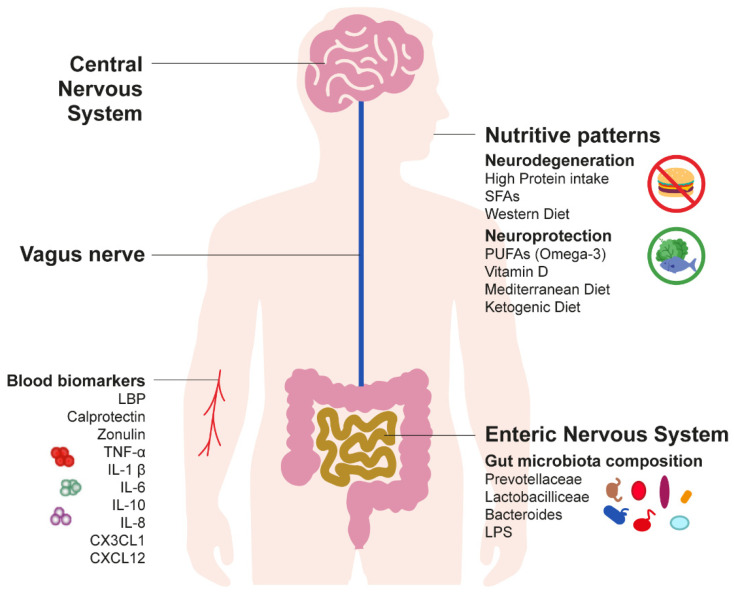Figure 1.
Schematic representation of the microbiota–gut–brain axis in the pathogenesis of Parkinson’s disease (PD). Alterations in the gut–microbiota composition (gut dysbiosis) may affect the aggregation of alpha-synuclein (α-Syn). The spread of α-Syn pathology from the enteric nervous system (ENS) to the central nervous system (CNS) is mediated by the vagus nerve. Gut dysbiosis may be revealed by Prevotellaceae, Lactobacilliceae, Bacteroides, and lipopolysaccharide (LPS). Possible blood biomarkers of gut dysbiosis and related inflammation in PD are LPS-binding protein (LBP), calprotectin, zonulin, tumor necrosis factor alpha (TNF-α), interleukin 1 beta (IL-1β), interleukin 6 (IL-6), interleukin 10 (IL-10), interleukin 8 (IL-8), C–X3–C motif ligand 1 (CX3CL1), and C–X–C motif chemokine ligand 12 (CXCL12). The nutritive patterns that may be associated with neurodegeneration in PD are the excessive protein and short-chain fatty acid (SFAs) intake, and the adherence to the Western diet. Conversely, a high intake of polyunsaturated fatty acids (PUFAs) and vitamin D, as well as diets such as the Mediterranean diet and the ketogenic diet, may have neuroprotective effects in PD.

